#brahmins
Text

Gilbert Williams, The Vortex (1982)
* * *
The Teachings of the Adepts, part II
“There is an invisible universe within the visible one, a world of causes within the world of effects. There is force within matter, and the two are one, and are dependent for their existence on a third, which is the mysterious cause of their existence. There is a world of soul within a world of matter, and the two are one, and caused by the world of spirit. And within these worlds are other worlds, visible and invisible ones. Some are known to modern science, of others she does not even know that they exist; for, as the material worlds of suns and planets and stars, the worlds of animate and inanimate beings, from man the lord of creation down to the microscopic world with its countless inhabitants, can only be seen by him who is in the possession of the powers necessary for their perception, likewise the world of the soul and the realms of the spirit can only be known to him whose inner senses are awakened to life. The things of the body are seen through the instrumentality of the body, but the things of the soul require the power of spiritual perception.
This power of spiritual perception, potentially contained in every man, but developed in few, is almost unknown to the guardians of science in our modern civilization, because learning is often separated from wisdom, and the calculating intellect seeking for worms in the dark caverns of the earth cannot see the genius that floats towards the light and it cannot realize his existence. And yet this ancient science, which the moderns ignore, is perhaps as old as the world. It was known to the ancient prophets, to the Arhats and Rishis of the East, to initiated Brahmins, Egyptians, and Greeks. Its fundamental doctrines are found in the Vedas as well as in the Bible. Upon these doctrines rest the fundaments of the religions of the world. They formed the essence of the secrets that were revealed only to the initiated in the inner temple where the ancient mysteries were taught, and whose disclosure to the vulgar was forbidden under the penalty of torture and death. They were the secrets known to the ancient sages and to the Adepts and Rosicrucians of the Middle Ages, and upon a partial understanding of their truths rests the system of modern Freemasonry.”
— Franz Hartmann, The Life of Paracelsus
#Gilbert Williams#The Vortex#Art#Beauty#Painting#Visionary#Franz Hartmann#The Life of Paracelsus#The Teachings of the Adepts#Adepts#Wisdom#Brahmins#Arthats#Vedas#Bible#Spiritual Perception#Man#Evolution#Sacred Mysteries
22 notes
·
View notes
Text
The Indian Brahmins took the memorization of the Vedas very seriously, and developed means to ensure accuracy and the careful reproduction of the same words and sounds from generation to generation. Careful, even exact oral replication of the Vedas was part of the Hindu faith, institutionalized during the learning process and maintained through peer observation and pressure through the life of a Brahmin. This community of faithful Brahmins was large and they all went through the same learning process, which was standardized to some degree. Deviation from the ... path of exact replication would have brought powerful forces of censure to bear on the offender...
The noted Sanskritist J.A.B van Buitenen told me that in the eighteenth and nineteenth centuries the Europeans who were learning Sanskrit were impressed by the fact that no matter where they went in the subcontinent, when they heard Brahmins recite the Vedas they heard the exact same thing. From Peshawar to Pondicherry, or Calcutta to Cape Comorin, hundreds of thousands, even millions, of Brahmins who had no direct contact knew these texts in precisely the same way...
— Gregory L. Possehl, Indus Age: The Beginnings
#hinduism#hindu#sanskrit#sanskrit language#brahmin#brahmins#indian brahmins#hindu brahmins#priesthood#priest#ancient india#india#memory#religion
11 notes
·
View notes
Text

Brahmin are good creatures, I have decided. They look at me with big and empty dumb eyes. They want nothing from me save for a handful of oats and a pinch of the face.
5 notes
·
View notes
Text
Cow and house warming
On the occasion of house warming as per Indian culture and tradition worshiping of cow is done. It is called gho pooja or Govardhana pooja. The part of the ritual is, they feed cow jaggery, fruits, rice and in devotion owner moves three times clockwise around it, an indication of reverence. Without performing this Gho pooja, house warming function is incomplete. In India cow is considered as a very sacred animal.
#Cow#Gho mata#culture#tradition#India#Indian culture#family love#celebration#South India#House warming#pooja#Gho pooja#Govardhana pooja#Brahmins#Hindus#Hindu#festivities#iskcon#hindudharma#hinduism#lord shiva#krishna#hindutva#Telangana#andhra pradesh#Mumbai#Navi Mumbai
24 notes
·
View notes
Text
Characteristics of the Caste System in India
The Indian caste system was formed to systematically discriminate between the Aryans, the conquering race, and the conquered races. It is divided into five large, non-intersecting classes. There is no detailed study on the population ratio, but it is roughly as follows.
Brahmins (priests) 5%,
Kshatriya (warrior) ₊ Vaishya (commoner) 54%
Sudra (Slave) 27%, Untouchable 14%
59% from Brahmin to Vaishya are treated favorably and the bottom two 41% are despised.
All religions of Indian origin are formed on the grounds of endorsing such discrimination. These are despicable.
Rei Morishita
インドのカースト制度の特徴
征服する民族アーリア人と被征服民族を、制度的に差別するために、インドのカースト制度は形成された。大きく,相交わらない5階級に分かれる。その人口比率についての詳細な調査は存在しないが、だいたい次のようになる。
バラモン(聖職者)5%、
クシャトリヤ(武人)₊バイシャ(庶民)54%
ス―ドラ(奴隷)27%、不可触賎民 14%
バラモンからバイシャまでの59%は優遇され、下の2つ41%は蔑まれる。
インド由来の宗教は「全て」、このような差別を是認する立場で形成されている。これらは、唾棄すべきものである。
#Caste System#India#Aryans#Brahmins#Kshatriya#Vaishya#Untouchable#religion#Rei Morishita#despised#All religions of Indian origin are formed on the grounds of endorsing such discrimination.
2 notes
·
View notes
Video
youtube
What are the Vedas?
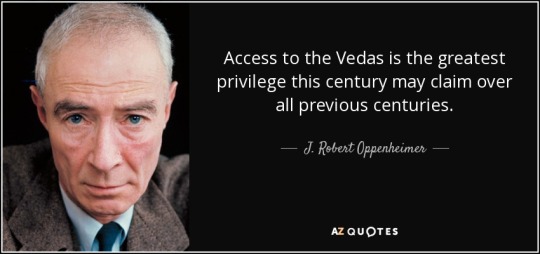

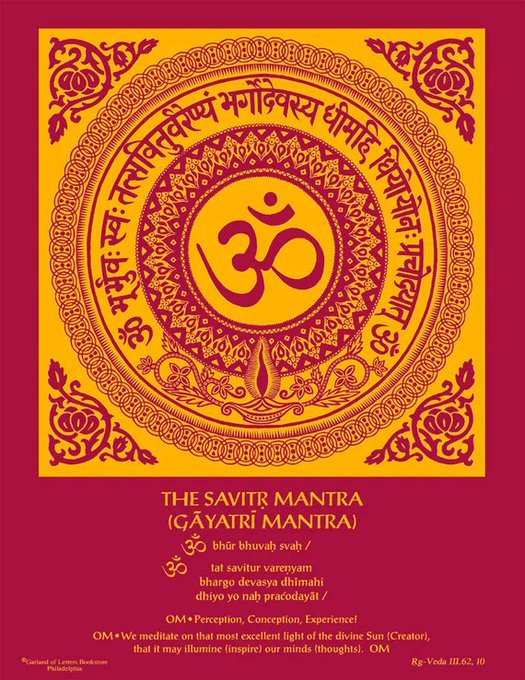
6 notes
·
View notes
Quote
The three classes, Brahmins, Kshatriyas, and Vaishyas, although not very happy in their mutual relationship, managed to work by compromise. The Brahmin flattered the Kshatriya, and both let the Vaishya live in order to be able to live upon him. But the three agreed to beat down the Shudra. He was not allowed to acquire wealth, lest he should be independent of the three [higher] Varnas. He was prohibited from acquiring knowledge, lest he should keep a steady vigil regarding his interests. He was prohibited from bearing arms, lest he should have the means to rebel against their authority. That this is how the Shudras were treated by the Tryavarnikas is evidenced by the Laws of Manu. There is no code of laws more infamous regarding social rights than the Laws of Manu. Any instance from anywhere of social injustice must pale before it.
'Annihilation of Caste', Dr. B.R. Ambedkar
#BR Ambedkar#Annihilation of Caste#India#casteism#Brahmins#Kshatriyas#Vaishyas#Shudras#Varnas#Tryavarnikas#Manusmṛiti#social rights#social injustice
6 notes
·
View notes
Text
Varahamihira: The ancient astrologer, astronomer and mathematician
His encyclopaedic knowledge and his lively presentation of subjects, as dry as astronomy, made him a celebrated figure.
writes MEERA S. SASHITAL.
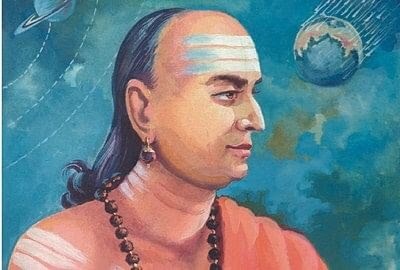
Even thousands of years before, India had become famous and reached its pinnacle in astrological and astronomical sciences. Ancient Astrological works had been translated into many foreign languages. Ibn Batuta and Al Baruni were two prominent Arab travellers who had visited ancient India specially to pursue Astrology. By their translations they had induced German scholars to come to India to study Astrology and Vedic literature. Varahamihira was one of the only renowned Indian Astronomer, Mathematician and Astrologer whose name became a household word throughout India and it is said his near contemporaries Aryabhata and Brahmagupta even did not match with the popularity of Varahamihira.
Varahamihira was born in 499 A.D. into a family of Brahmins settled at Kapittha, a village near Ujjain. His father, Adityadasa was a worshipper of the Sun god and it was he who taught Varahamihira astrology. On a visit to Kusumapura (Patna) young Varahamihira met the great astronomer and mathematician, Aryabhata. The meeting inspired him so much the he decided to take up astrology and astronomy as a lifetime pursuit. At that time, Ujjain was the centre of learning, where many schools of arts, science and culture were flourishing in the prosperity of the Gupta reign. Varahamihira, therefore, shifted to this city, where scholars from distant lands were gathering. In due course, his astrological skills came to the notice of Vikramaditya Chandragupta ii, who made him one of the Nine Gems of his court.
It is interesting to note as to how Varaha-mihira got the title ‘Varaha’. King Vikramaditya was aghast at the royal astrologer Mihira’s prediction. He looked round the well-lit and crowded court and asked in anguish “Can it be true?” There was no reply. There was pin-drop silence as all were shocked beyond words at the royal astrologer’s prediction. Breaking the silence and with full of grief himself, the royal astrologer confirmed the prediction, “The position of the planets predicts the death of the prince at the age of18.” Though the King controlled his emotions, the Queen could not contain herself and wailed “My lord, you should see to it that this prediction proves false.”
Though the King had full faith in his astrologer Mihira, he took every precaution to protect and save his son. But on the predicted day, a boar killed the prince. When the news reached the King, he summoned Mihira to his court and told him “I am defeated, you have won, you have won.” The astrologer was as sad as the king, and he replied “My Lord. I have not won. It is the science of astronomy and astrology that has won!” “Whatever it may be, my respected astrologer,” said the King. “It has convinced me that your science is nothing but truth. And for your mastery of the subject, I now confer upon you the Magadha kingdom’s greatest award, the emblem of the varaha (boar).” So from that time Mihira came to be known as Varahamihira.
Varahamihira was learned in the Vedas, but he was not a blind believer in the supernatural. He was a scientist. Like Aryabhata before him, he declared that the earth was spherical. In the history of science he was the first to claim that some “force” might be keeping bodies stuck to the round earth. The force is now called gravity.
Scholars are of the view that Varahamihira had constructed “Meru Stambh”, what is presently famous as Qutub Minar, 2200 years ago, for doing research on astronomy. It was a seven storied structure constructed in the middle of a lake. These seven stories symbolized seven planets and the structure also had 27 windows symbolizing twenty-seven constellations. Black stone has been used in the construction of Meru Stambh so that there was darkness inside. The main entrance faces North and is slanted slightly backward towards South at an angle of five degrees. Its foundation is 26 yards deep and its actual height was 84 yards but which now has been reduced to 76 yards. Britishers had demolished the topmost storey to prevent the structure from falling as the slant was more prominent at the top and it caused threat to the structure.
Varahamihira’s main work is the book Pancha Siddhantika (“Treatise on the five Astronomical Canons gives us information about older Indian texts which are now lost). The work it seems is a treatise on mathematical astronomy and it summarises five earlier astronomical treatises, namely, the Surya Siddhanta, Romaka Siddhanta, Paulisa Siddhanta, Vasishtha Siddhanta and Paitama Siddhanta. Panch Siddhanta holds a prominent place in the realms of astronomy. He proposed that the Moon and planets are lustrous not because of their own light but due to sunlight. It is acclaimed that Pancha Siddhantika of Varahamihira is one of the most important sources for the history of Hindu Astronomy from before the time of Aryabhata.
Another important contribution of Varahamihira is the encyclopaedic Brihat-Samhita. It covers wide ranging subjects of human interest, including astrology, planetary movements, eclipses, rainfall, rainfall, clouds even domestic relations, gems, pearls and rituals. The volume expounds on gemstone evaluation criterion found in the Garuda Purana, and elaborates on the sacred Nine Pearls from the same text. It contains 106 chapters and is known as the “great compilation”.
Being an Astrologer he wrote on all the three main branches of Jyotisha astrology. It covered Brihat Jataka which is considered as one of the five main treatises on Hindu astrology on Horoscopy; Laghu Jataka, Samasa Samhita, Brihat Yogayatra, Yoga yatra, Tikkani Yatra, Lagu Vivaha Patai,Daiiivajna Vallabha (apocryphal). His son Prithuyasas also contributed in the Hindu Astrology; his book Hora Sara is famous book on Horoscopy.
Varahamihira’s mathematical work included the discovery of the trigonometric formulas. He improved the accuracy of the sine tables of Aryabhata l. He defined the algebraic properties of zero as well as of negative numbers. Furthermore, He was among the first mathematicians to discover a version of what is now known as the Pascal’s triangle. He used it to calculate the binomial coefficients.
Varahamihira made some significant observations in the field of ecology, hydrology and geology too. His claim that plants and termites serve as indicators of underground water is now receiving attention in the scientific world. He was also a prolific writer. His mastery of Sanskrit grammar and poetic metre enabled him to express himself in a unique style. His encyclopaedic knowledge and his lively presentation of subjects, as dry as astronomy, made him a celebrated figure. His treatise such as Pancha Siddhantika (Five Principles), Brihatsamhita (Master Collection), Brahjataka (Astrological work) have put him on as high a pedestal in Astrology as Kautilya’s in Political philosophy, Manu’s in Law or Panini’s in Grammar.
It is learnt, Varahamihira humbly said about his own treatises: “The science of Astrology is a vast ocean and is not easy for everyone to cross it. My treatises provide a safe boat.” Truly, even now they are acknowledged as masterpieces.
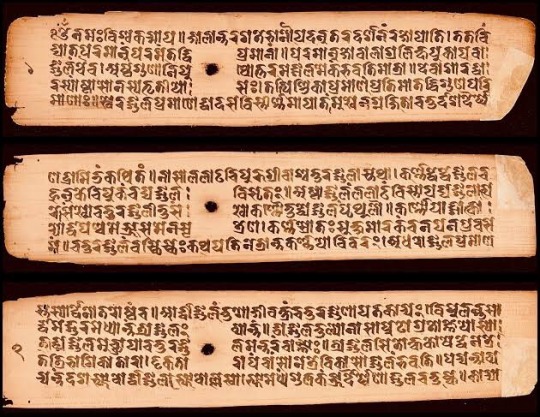


#Varahamihira#The Ancient#Ancient#Astrologer#Astronomer#Mathematician#Encyclopaedic#Aryabhata#Brahmagupta#499 A.D#Brahmins#Kapittha#Village#Ujjain#Patna#hinduism#hindus#hindudharma#Mihira#Queen#King#Prince#Lord#Maurya#aryabhatta#Astrology#sanatana
8 notes
·
View notes
Photo
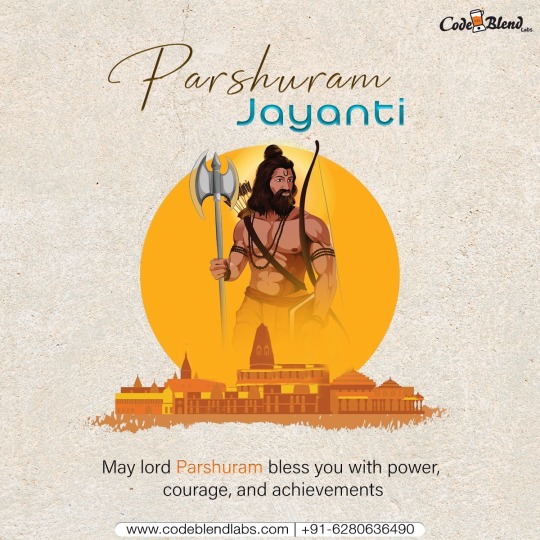
May you be blessed with the power and courage of Lord Parshuram! Happy Parshuram Jayanti!
.
.
#codeblendlabs#parshuramjayanti#brahman#parshuram#pandit#brahmanraaj#jaiparshuram#hindu#bhudev#tyagi#brahmins#brahmansamaj#bholenath#parshuramvanshi#brahmanwaad#india
4 notes
·
View notes
Text
Among The Last Reputed Bastions Of Academic Freedom Falls
Sandeep Pandey*
This is the seventh consecutive academic year when I would have gone as a visiting faculty member to the Indian Institute of Management at Ahmedabad to teach an Elective course on Transformational Social Movements to the second year of Post Graduate Programme students. But the invitation has not come so far and it looks like it is the end of my teaching stint at IIM, at least, so…

View On WordPress
#Academic Activity and True Research#Academic Freedom#Ahmedabad#Banares Hindu University#Bedarata Pain#Berkeley Campus#Bhartiya Janata Party#BJP#Brahmins#Centralised decision making in IIMs#Christians#Farmers&039; Movements#Free Speech Movement#Freedom of Expression Rights#Freedom of Speech#Gujarat#Hardoi district#IIM#India belongs to everybody#India is not only for HIndus#India&039;s Daughter by BBC#Indian Institute of Management#Madan Mohan Malviya#Mehdiganj#Muslims#NALSAR#NASA Scientist#Neo-liberal Economic Policies#Nirbhaya Incident#Open Campus
0 notes
Text
Ravan Mantra || Powerful || Sanatan Darshika
In addition to being a powerful Rakshasa warrior, Ravana was also very knowledgeable in the Vedas, Puranas, and other religious texts. Ravana is regarded as the only devotee of Shiva who has ever existed and will ever exist. Ravana had the utmost devotion to Shiva. #ravan #brahmins #brahman #veda #vedas #hindu #hindutemple #sanatandharma #ram #ramayana #shiv #shiva
Instagram: https://www.instagram.com/sanatandarshika/
Youtube : https://www.youtube.com/channel/UCBLQYElJdibXI3qZHCfXrZw
0 notes
Text
Religious Communities in Maharashtra and Gujarat: 19th Century Photography
From: Photographs of Western India
William Johnson
1850-1859; 1860-1869
Source: Southern Methodist University's DeGoyler's Library

"Smartha Brahmins" (Hindu)

"Sadhus of Gujarat" (Hindu)
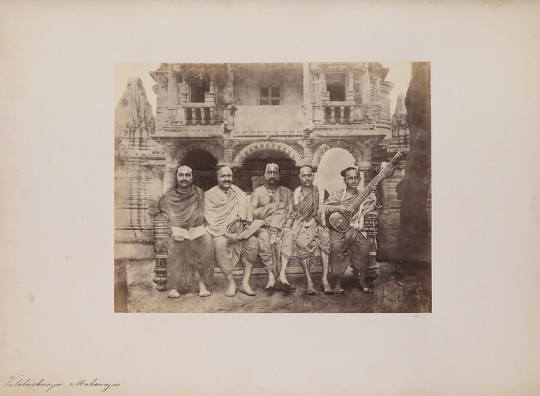
"Vallabhacharya Maharajas" (Pushti Marg)
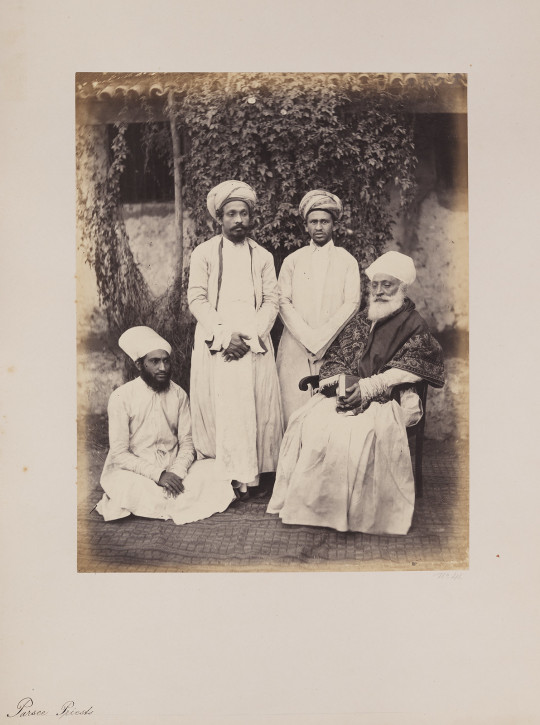
"Parsee Priests" (Zoroastrianism)

"Bene Israel Priests" (Judaism)
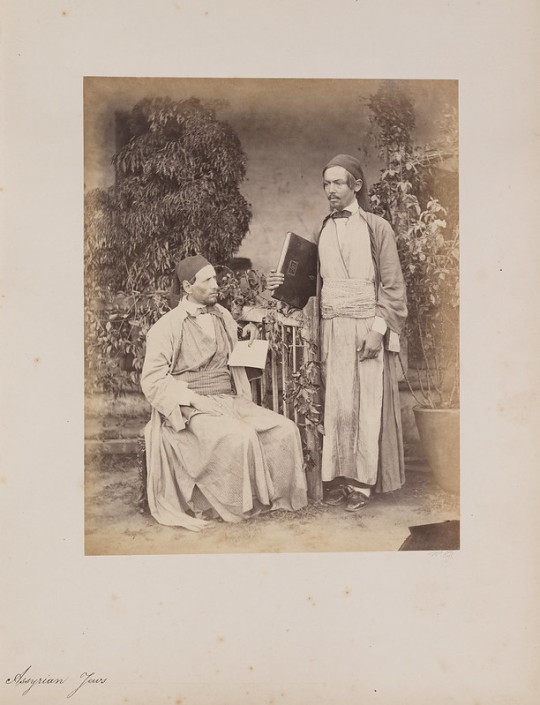
"Assyrian Jews" (Judaism)

"Khojas" (Islam)
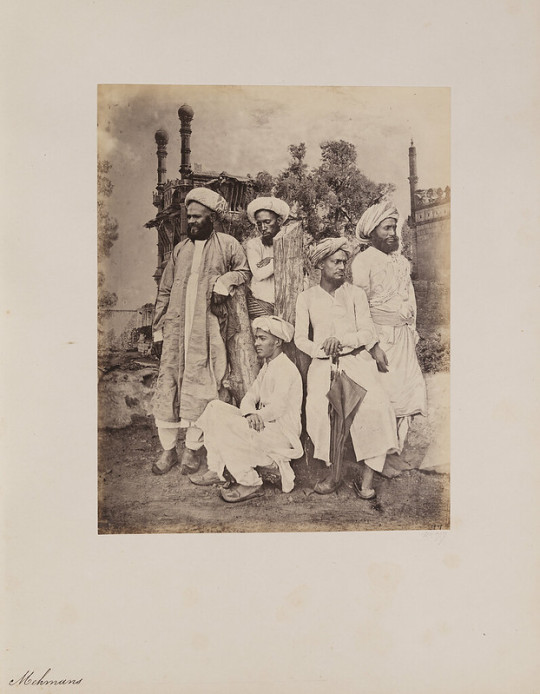
"Memons" (Islam)
#brahmins#parsi#parsee#memon#khoja#islam#hinduism#photography#vintage photography#assyrian jews#judaism#bene israel#vallabhacharya#goswamis#maharashtra#gujarat#bombay#mumbai#zoroastrianism
1 note
·
View note
Text
Brahmin law on punishments (Arthashastra)
Brahmins: The Arthashastra does not mention specific punishments for Brahmins as they were considered the highest varna and were expected to lead an ascetic life, renouncing material wealth and power. However, in case a Brahmin committed a crime or violated the law, the text suggests that the ruler should reprimand or counsel them, rather than subjecting them to harsh punishments.
Kshatriyas: The Kshatriyas, who were the rulers and warriors, were responsible for maintaining law and order and administering justice. The Arthashastra prescribes various punishments for offenses committed by Kshatriyas, including fines, imprisonment, and in severe cases, capital punishment such as execution by beheading or impalement.
Vaishyas: The Vaishyas, who were merchants, farmers, and artisans, were engaged in trade, agriculture, and commerce. The Arthashastra suggests fines, confiscation of property, and public humiliation as punishments for Vaishyas in case of offenses such as fraud, cheating, or economic crimes.
The text does not explicitly mention specific punishments for Shudras, as they were considered subject to the higher varnas (ie. anything goes)
#brahmin#brahmins#vedic#vedism#vedas#veda#hindu#hinduism#caste#casteism#oppression#slavery#india#desi#south asia#bollywood#tollywood#kollywood#history#law
0 notes
Text

Brahmins Foods is a food product-based company in Kerala. Brahmins group is a well-known manufacturer and supplier of multiple food products.
0 notes
Text
Bronze Age End’s Likely Cause
“Indo-European tribes such as the Phrygians, Thralians, Proto-Armenians, Macedonians and Dorian Greeks seem to have arrived at this time—possibly from the north.” + Vedic Aryans, etc. ofc.
Some suggest diseases, but diseases don’t just randomly appear. Noteworthy is the fact that the first instance of biological warfare was the Hittites’ plague.
Further, Indo European groups (Mycenaeans, Hittites, Sanskrit Mitanni, Vedic Aryans, etc) were known for weapons and war, more than anything else.
Indus Valley example: “Robbins Schug's research shows that leprosy appeared at Harappa during the urban phase of the Indus Civilization, and its prevalence significantly increased through time. New diseases, such as tuberculosis, also appear in the Late Harappan or post-urban phase burials. Violent injury such as cranial trauma also increases through time, a finding that is remarkable, she said, given that evidence for violence is very rare in prehistoric South Asian sites generally.”

160 individuals (67% of the total number excavated) from three main burial areas at Harappa: an urban period cemetery (R-37), a post-urban cemetery (H), and an ossuary (Area G)

Figure 4. Lesions on the cranial vault of a male skull, I.S.11.
This individual also has an injury (sharp blunt force trauma) on the frontal bone. The cranium is isolated and thus the etiology of these lesions is unclear (a: left lateral view). A close-up image demonstrates the destructive and proliferative character of these lesions (b: right frontal bone).
source: https://journals.plos.org/plosone/article?id=10.1371/journal.pone.0084814#s2
#indo europeans#indo european#prehistory#bronze age#ancient civlizations#mesopotamia#archaeology#disease#famine#indus valley#meluhha#melakam#vedic#brahmins#greeks#greek#hinduism#hittite#plague#small pox#history#mitanni#sanskrit#mycenean#aryan#iran#india#south asia#levant#syria
0 notes
Text
Teen tranny beauty is craving for orgasms and cumshots
Skinny blonde teen gets fucked real hard
Anal sex hard
Fat ass booty
Hot playgirl gets fucked hard with fake dick and pussy slimed
PUBLIC BLOWJOB IN LAUNDROMAT/BABYGIRL 1ST ANAL*Facial/AnalCreampie/Orgasm*
JAV pale mature Mariko Kawana big butt blowjob in shower
Extreme Anal Gape POV 4k
Wet pussy rides fat dick
silvia dellai piss drinking piss enema compilation
#Brahmins#overweaponed#unpredictably#stewartry#sidewalls#blowballs#sericitization#cuttle-fish#axenically#Lanesville#loxes#pieton#pla#crankling#reseek#limps#lovesick#CICS#martyrologium#Perkiomenville
0 notes